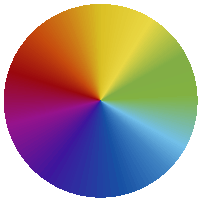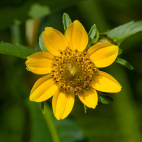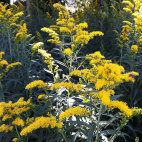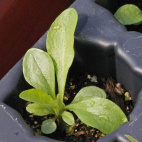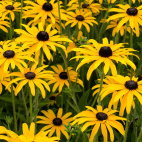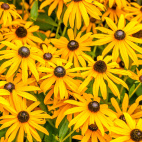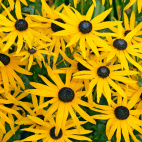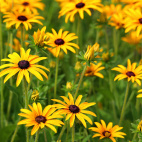Color
Availability
USDA Zone
Region
Type
Duration
Season
Germination
Soil
Sunlight
Height
Use
Narrow Your Search
Color
Availability
USDA Zone
Region
Type
Duration
Season
Germination
Soil
Sunlight
Height
Use
Wildflower Seeds - Northern Region
The Northern region is home to our Canadian friends in the eastern provinces, as well as the northern-most part of the Eastern US. This area is characterized by a long, cold winter with lots of snow, and a short humid summer that only lasts about 3 or 4 months. Most of the area is classified as a UDSA Growing Zone 4 or less, and the species that grow here have interesting ways to perpetuate themselves in spite of the short growing season. There are a lot of forests and wetlands in this region, so adequate moisture is hardly ever a problem. Look up your growing zone to make sure that the Northern wildflower seeds that you want to grow are winter hardy. Alternatively, just order annual flower seeds online so that the plant does not need to make it through the winter, but can reseed itself and come back from seed the next year.
-
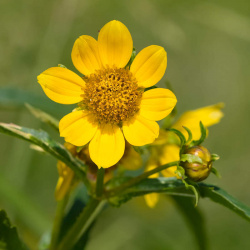 Nodding Bur Marigold Seeds
Bidens cernua
The heads of this bright yellow wildflower nod downward with time, earning its descriptive name. The wet-loving plant thrives in swamps, bogs, ponds, and riverbanks.Quick Viewx
Nodding Bur Marigold Seeds
Bidens cernua
The heads of this bright yellow wildflower nod downward with time, earning its descriptive name. The wet-loving plant thrives in swamps, bogs, ponds, and riverbanks.Quick ViewxNodding Bur Marigold Seeds
Bidens cernua
The heads of this bright yellow wildflower nod downward with time, earning its descriptive name. The wet-loving plant thrives in swamps, bogs, ponds, and riverbanks.
$3.48 Pkt - $26.00 / Oz -
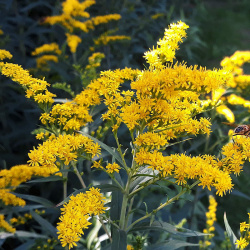 On Sale!
Old Field Goldenrod Seeds
Solidago nemoralis
This classic goldenrod is very hardy, and will even thrive in poor dry soils. It is widely used in native prairie mixes because it grows well in light soils. Old field goldenrod makes a great pollen source for honeybees in the fall and is also known for its medicinal qualities.Quick Viewx
On Sale!
Old Field Goldenrod Seeds
Solidago nemoralis
This classic goldenrod is very hardy, and will even thrive in poor dry soils. It is widely used in native prairie mixes because it grows well in light soils. Old field goldenrod makes a great pollen source for honeybees in the fall and is also known for its medicinal qualities.Quick ViewxOld Field Goldenrod Seeds
Solidago nemoralis
This classic goldenrod is very hardy, and will even thrive in poor dry soils. It is widely used in native prairie mixes because it grows well in light soils. Old field goldenrod makes a great pollen source for honeybees in the fall and is also known for its medicinal qualities.
$3.25 Pkt - $20.16 / Oz -
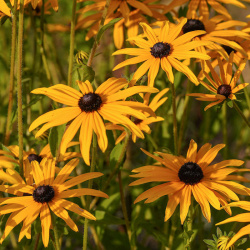 Orange Coneflower Seeds
Rudbeckia fulgida
Orange coneflower is an overlooked gem in its golden profusion. It is like a Black-eyed Susan with a more vibrant golden color and is rather uncommon in the wild. This perennial is easy to grow and blooms late in the season.Quick View$3.75 Pkt - $48.00 / Oz
Orange Coneflower Seeds
Rudbeckia fulgida
Orange coneflower is an overlooked gem in its golden profusion. It is like a Black-eyed Susan with a more vibrant golden color and is rather uncommon in the wild. This perennial is easy to grow and blooms late in the season.Quick View$3.75 Pkt - $48.00 / Oz -
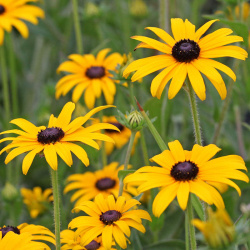 Out Of Stock
Showy Black Eyed Susan Seeds
Rudbeckia fulgida speciosa
This perennial is very similar to Orange Coneflower, with blooms that are more numerous, larger, and more golden than regular Black-eyed Susan. This native wildflower is easy-to-grow and is loved by the pollinators.Quick Viewx
Out Of Stock
Showy Black Eyed Susan Seeds
Rudbeckia fulgida speciosa
This perennial is very similar to Orange Coneflower, with blooms that are more numerous, larger, and more golden than regular Black-eyed Susan. This native wildflower is easy-to-grow and is loved by the pollinators.Quick ViewxShowy Black Eyed Susan Seeds
Rudbeckia fulgida speciosa
This perennial is very similar to Orange Coneflower, with blooms that are more numerous, larger, and more golden than regular Black-eyed Susan. This native wildflower is easy-to-grow and is loved by the pollinators.
$3.48 Pkt - $21.00 / Oz
The Northern region is home to our Canadian friends in the eastern provinces, as well as the northern-most part of the Eastern US. This area is characterized by a long, cold winter with lots of snow, and a short humid summer that only lasts about 3 or 4 months. Most of the area is classified as a UDSA Growing Zone 4 or less, and the species that grow here have interesting ways to perpetuate themselves in spite of the short growing season. There are a lot of forests and wetlands in this region, so adequate moisture is hardly ever a problem. Look up your growing zone to make sure that the Northern wildflower seeds that you want to grow are winter hardy. Alternatively, just order annual flower seeds online so that the plant does not need to make it through the winter, but can reseed itself and come back from seed the next year.


